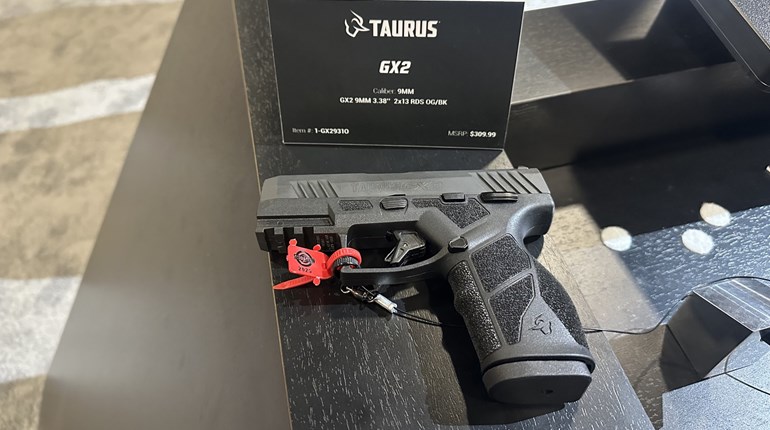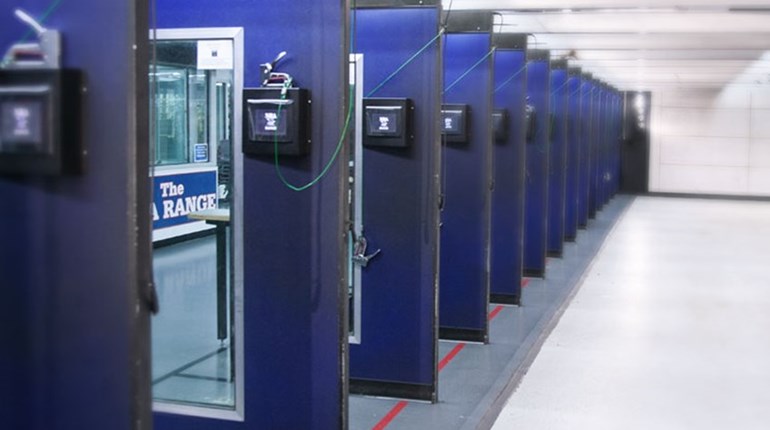
The Problem
You live alone in a rural community. Even though you do not have any immediate fear, crime in your area seems to be on the rise. A relative suggested that you keep a gun in the house in the event that it might be needed someday. He has offered to assist you in choosing the right gun for you to purchase, as well as provide the accompanying training regarding its use. You have some experience from your youth shooting a .22 LR pistol, so you are leaning toward that option. You realize the choices are many, but were hoping Shooting Illustrated could give you some suggestions of guns and ammunition to get you started.
The Solution
Only in the last few years has the .22 LR rimfire cartridge been deemed as even mildly acceptable for defensive purposes.
It finally dawned on firearm and ammunition manufacturers that the buying public had some specific needs that were not being met directly. Fortunately, that realization resulted in guns and ammunition designed for personal protection.
Not knowing your hand size, strength or your physical condition, I can give offer some guidelines and suggestions which, I believe will get you started as I perceive the situation. Regardless of your choices of firearms and ammunition, safe handling and secure storage should be at the forefront of getting comfortable with your new acquisitions. Both safety and successfully hitting your target can be achieved by being consciously attentive to muzzle placement (where the bullet comes out of the gun) and the trigger-finger placement (the part that you pull to make the gun fire). Your finger should not be near the trigger until you’re ready to fire the pistol. Quality training should cover that in depth and detail.
There are two types of handguns for the application of self-defense: semi-automatic pistols and revolvers. Each has its advantages and disadvantages.
Revolvers tend to be simpler to operate in that once the gun is loaded, it is a matter of getting the muzzle on target and pulling the trigger without causing the muzzle to veer from the target to achieve hits in the desired location. If there is a downside to a revolver, it is ammunition capacity, which is usually six to eight cartridges, depending on the model of the gun.
Semi-automatic pistols have a little more ammunition capacity, generally speaking, but the learning curve for these guns is a little steeper. Just loading the magazine against spring tension can be difficult for some people. Retracting and releasing the slide to chamber a cartridge can present a challenge for the person new to shooting as well. Just learning where the magazine release and other mechanical features of the gun are, as well as how to operate them correctly, adds more to learn aside from simple marksmanship.
Is A .22 Enough?
These are but a few concerns that should be considered prior to purchasing a firearm as a “just in case” tool that will not be used often.
Semi-automatic pistols have a little more ammunition capacity, generally speaking, but the learning curve for these guns is a little steeper. Just loading the magazine against spring tension can be difficult for some people.
Before you make your final decision to purchase, it would be prudent to handle and learn to manipulate both options to validate which of the two types provide you with the most comfort—both physically and psychologically. This should be followed by a little range time to become familiar with the sound and movement of the gun when you fire it. That familiarity, along with a sufficient amount of instruction regarding the muzzle and the trigger, should produce acceptable hits on target at across-the-room distances.
In my training inventory for introducing new and prospective shooters to handguns for any of several purposes chosen by the student, I maintain a variety of handguns that give the broadest spectrum from which to choose. I have Ruger Wrangler single-action revolvers, Ruger double-action/single-action LCRx revolvers and Ruger double-action-only LCR revolvers, all chambered in .22 LR. With these options, the student can choose what fits them best, as well as what trigger pull and type of sights are most favorable to their needs. I also have a variety of .22 rimfire semi-automatic pistols from multiple manufacturers that vary in both size and features to enable the student to make informed choices through their direct/personal experience with a particular product.
Whether it be a revolver or a semi-automatic, the number-one consideration—regardless of brand—is reliability. A gun that will not shoot its full complement of ammunition consistently should be exchanged for a gun that will, or alternatively, find ammunition that will function in the gun consistently.
Recently, ammunition manufacturers have recognized the buying public is choosing the .22 LR cartridge as a choice for personal defense.
Federal and CCI are producing two of the best options currently available. Federal Punch Personal Defense ammo is designed for maximum penetration in living tissue when it is fired out of a 2-inch barreled handgun. Moving on to CCI, its Uppercut Defense ammunition has an expanding bullet, optimized to perform for defensive purposes out of a 2.5- to 4-inch-barreled handgun. Although there may be other options from these and other manufacturers of .22 LR ammunition, it is unlikely that any will top the performance delivered by these cartridges.
However, regardless of your choices of gun and ammunition, it is imperative that you get the proper training and ensure the reliability of your gun and ammunition combination through training and practice.
Shoot straight and shoot safe!




































